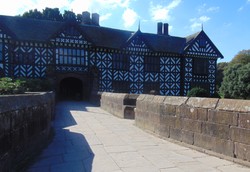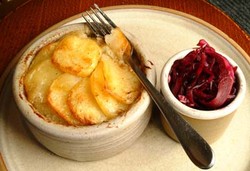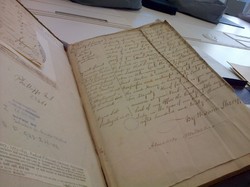I had a beautiful day out today to Speke Hall, Liverpool which is owned by the National Trust.
Evidence shows there was a large old house on this site in Saxon times ( from about 800AD ) but the present house building phase started in 1530. Parts of the earlier house are included in the Tudor building.
The Great Hall was the first part of the house to be built, in 1530. The Oak Parlour was added in 1531.There were several house building phases between 1540 and 1570 and then all major alterations were made by 1598.
The house stands close to the edge of the River Mersey on the way up to the estuary to the Irish Sea and also is next to Liverpool, John Lennon Airport. The runway is almost in the garden.
The Moat is now grassed over.
It is a lovely day out.























 Blarney Castle and Gardens, County Corkon 06/01/2023
Blarney Castle and Gardens, County Corkon 06/01/2023
 An Cóbh, Corcaigh, Eireon 05/29/2023
An Cóbh, Corcaigh, Eireon 05/29/2023
 Dublin ; The Book of Kellson 04/04/2023
Dublin ; The Book of Kellson 04/04/2023
 The Bee Tree Community CIC;- an online support communityon 08/24/2022
The Bee Tree Community CIC;- an online support communityon 08/24/2022


Comments
Derdriu,
The listening holes above the inner courtyard pictured above are like small slits in the wooden eaves.
Frank and I were both students in Liverpool at different times ( as he is years older than I ) and we can both attest to dreadful fogs which come in off the Irish Sea. They used to linger for days because of the air pollution but the UK has improved air quality which has eased fog problems. It was very easy for ships to go down in fog in the Irish Sea. The ships waiting to whisk away escaping Catholic priests were very brave indeed. Fear of capture and execution and also fear of fog!
Veronica, It's my understanding that pre-twentieth century homes could be quite savvily constructed in regard to ventilation and in terms of hearing what was going on around the premises. What did observation holes look like? Is the Mersey the place in the United Kingdom where people go missing because they get disoriented in the fogs?
Yes indeed. Their faith and determination though were remarkable.
With the amount of winter rain that we have been having we can now know something about what it was like in the past. Even with modern vehicles I have had to avoid flooding in winter in the North West. I suppose that a flood and a swamp are better than being hanged, drawn and quartered.
Travelling in winter in NW England can still be a grim endeavour :)
Speke Hall was definitely a leaving point for priests to get to Ireland.
Priests could go to Ireland, but in the Mersey fogs you could go anywhere on the coast without being observed. I suggest that priests would have been very secure in Winter, as no one travelled without urgency in Winter in the sixteenth century, as doing so was a grim endeavour. When the weather was not wet it was freezing; and it was safe for fugitives with someone to shelter them.
By the way, Veronica and I both attended the same college in Liverpool,though not at the same time.
I got to know the fogs there as I did my second teaching practice in Speke, in late Autumn!
You are right Frank. Speke Hall was ideally situated as an escape for priests. Boats could whisk them away over to Ireland and as you say, Speke Hall was marshy terrain and difficult for the authorities to gain access there.
As for fogs, in my student days in Liverpool there were plenty of those.
Yes indeed it was a very dark time in British history and went on for years with several being executed for the faith. Many old houses had priest holes.
Speke had an advantage when it came to sheltering fugitive priests. At that period South Lancashire was still very boggy, with large areas of swamp that made travel difficult. In wet conditions Speke would have been hard of access, and being near the river Mersey, when necessary a priest could be in a small boat and away to safety. The area is also prone to river fogs, so once a priest was away in a small boat, no one was even going to see him.